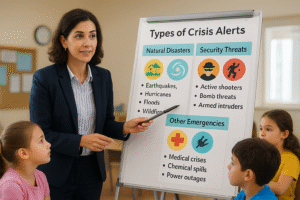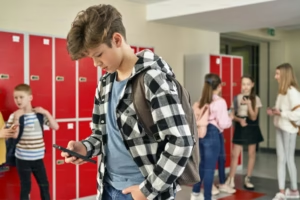Resources

Introduction
Every parent, teacher, and administrator shares one common goal: to keep students safe. But the truth is, traditional safety measures are no longer enough. From health emergencies to potential security threats, schools face challenges that require faster, clearer, and more reliable communication systems.
This is why alert technology in schools is becoming essential. With real-time notifications, color-coded alerts, and instant communication tools, schools can respond to emergencies more effectively and create a culture of readiness that protects everyone on campus.
What is Alert Technology in Schools?
Alert technology in schools refers to digital and hardware-based systems designed to instantly notify staff, students, and emergency responders about incidents on campus. Unlike traditional methods like phone trees, intercom announcements, walkie-talkies, or emails, these systems prioritize speed, clarity, and accessibility.
Some common forms of alert technology include:
- Wearable panic buttons
- Color-coded safety badges worn by staff
- Mobile and desktop emergency alerts
- Centralized dashboards for administrators
- Mounted panic buttons
- Visitor management and sign-in alerts
The goal: ensure that no matter where you are on campus, you’ll know what’s happening and how to respond.
Why Schools Need Modern Alert Technology
1. Emergencies Can’t Wait
During a crisis, every second matters. Whether it’s a medical emergency in the cafeteria or a security threat outside the building, schools cannot afford delays. Effective alert technology reduces confusion and ensures staff respond in seconds — not minutes.
2. Traditional Systems Fall Short
Phones, intercoms, and walkie-talkies all have limitations. They may fail during power outages, have limited range, or create bottlenecks where only one person can communicate at a time. Real-time alert systems overcome these weaknesses by sending simultaneous notifications across multiple channels.
3. Empowering Every Adult on Campus
Safety is not the job of just one officer or administrator. Every teacher, substitute, and staff member needs to be empowered to respond instantly. With user-friendly alert badges or one-tap apps, even those new to the campus can take the right action immediately.
4. Parents Expect More Transparency
Parents today want more than reassurance — they want proof their child’s school is prepared. Alert technology helps schools build trust by demonstrating clear, proactive steps to protect students.
5. Compliance and Regulations
With requirements like Alyssa’s Law, schools must adopt panic-button–style systems to ensure quick communication with law enforcement. Alert technology ensures compliance while also enhancing everyday safety.
Key Features of Effective School Alert Technology
An effective school alert technology system should embody the key features and functionality below:
✅ Clearly delineated Color-Coded Alerts – For instant recognition and inclusive communication:
🔴 Lockdown – Immediate security response
🔵 Medical – Request urgent medical help
🟡 Admin Assist – Support without disruption
🟢 All Clear – Safe to resume or to start re-unification
✅ Campus-Wide Coverage – From classrooms to gyms and playgrounds.
✅ Customizable Options – Alerts tailored for specific situations
✅ Integrations – Connection with 911 systems and local first responders
✅ Ease of Training – Simple tools so staff and substitutes understand quickly
The Role of Alert Technology in Building a Culture of Readiness
Safety is not just about responding to emergencies — it’s about creating a culture where staff and students are always prepared.
When schools implement clear, reliable alert systems:
- Staff gain confidence knowing they have tools to act.
- Students feel more secure, reducing fear during drills or crises.
- Parents trust that their child’s safety is prioritized.
This readiness culture transforms schools from being reactive to proactive.
CoreReal-Life Scenarios Where SimulAlert® Makes a Difference
- Medical Emergency in the Hallway
A student collapses between classes. A teacher presses a blue medical alert, and the nurse is notified instantly — no waiting on phones or intercoms - Unidentified Visitor
A staff member sees an armed person enter through a side door. Instead of leaving their students, they press a red lockdown alert and first responders are notified right away. The entire school is secured within seconds. - Dismissal Confusion
A student doesn’t get on their assigned bus. With a quick admin assist alert, staff coordinate instantly without alarming parents or students unnecessarily. - False Alarms Reduced
Instead of using one “panic button” for every situation (prone to false alerts), color-coded alerts eliminate overreaction and help staff respond with the right level of urgency calmly.
Conclusion
The challenges facing schools today require more than traditional tools. Alert technology in schools empowers every adult, improves response times, and ensures students are protected in any situation.
By combining technology with training and culture, schools can move beyond compliance to build true readiness — where clarity, speed, and confidence define every response.
Ready to see how alert technology can transform safety in your school?
👉 Book a Free Demo with SimulAlert Today



